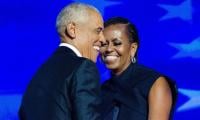A brief chronology, timeline and overview of Saudi-Iran ties
LAHORE: Having established diplomatic relations about 87 years ago in 1929, just three years after Saudi Arabia’s King Abdul Aziz ibn Saud had ordered the destruction of some sacred Shiite-revered shrines at Madina’s Jannat Al-Baqi cemetery on April 21, 1926, both Riyadh and Tehran are once again at loggerheads with each other following the beheading of prominent Shia cleric Nimr al-Nimr and 46 others on January 2, 2016.
King Abdul Aziz ibn Saud’s 1926 decision had caused outrage in Iran, with the then Iranian government calling for the ousting the House of Saud and consequently, the Iranians were banned from performing the Hajj pilgrimage in 1927.
Since then, the two countries have nourished differences over the interpretations of Islam, aspirations hegemony within the Islamic world, oil export policy, relations with the United States and the developed West.
A study of books like Simon Mabon’s “Saudi Arabia and Iran: Soft power rivalry in the Middle East,” renowned American-Israeli scholar Martin Seth Kramer’s “Arab awakening and Islamic revival: The politics of ideas in the Middle East,” Lawrence Potter’s “Sectarian politics in the Persian Gulf” and Henner Furtig’s “Iran’s Rivalry with Saudi Arabia Between the Gulf Wars” etc give a detailed overview of the long-strained bilateral ties between the Sunni Islamic kingdom and the Shia-dominated Islamic Republic, which are currently involved in covert wars in Yemen and Syria while their interests clash in Iraq, Bahrain and Lebanon too.
It has actually been a sorrowful tale of hostility, tension, confrontation and harsh words.Recently, Saudis had announced a 34-nations alliance against terrorism which did not include Iran.
While the Iranians are apparently happy regarding Syria, where all the efforts made by Saudi Arabia and its allies for a regime change have run into a dead end, President Bashar al-Assad has till date survived with their help.
Martin Seth Kramer, who is also is the President of Jerusalem’s Shalem College, had mentioned in his book “Arab awakening and Islamic revival: The politics of ideas in the Middle East” that in 1943, an Iranian pilgrim was beheaded for allegedly bringing excrement inside the Great Mosque on his garment. He had written that Iran had lodged a formal protest and had suspended pilgrimage until 1948.But then came a time during the late 1960’s when King Faisal of Saudi Arabia and King Reza Shah Pahlavi of Iran had exchanged series of letters.
Quoting Prince Bandar bin Sultan, the then Saudi Ambassador in Washington DC, this is what the “New York Times” had stated in its November 4, 2001 edition: “In the late 1960’s, the Shah had sent King Faisal a series of letters that said: ‘’Please, my brother, modernise. Open up your country. Make the schools mixed women and men. Let women wear miniskirts. Have discos. Be modern. Otherwise I cannot guarantee you will stay in your throne.’’ King Faisal wrote back: ‘’Your majesty, I appreciate your advice. May I remind you, you are not the shah of France. You are not in the Elysee. You are in Iran. Your population is 90 percent Muslim. Please don’t forget that.’’
History tells us that in 1966, King Faisal of Saudi Arabia had visited Iran and King Reza Shah Pahlavi of Iran had reciprocated by paying an official visit to Saudi Arabia.
Times passed and following the 1979 Revolution, Iran had started to attack Saudi Arabia blatantly, whereby criticising the character and religious legitimacy of the Saudi regime.
Despite Imam Khomeini’s aggressive tone, King Khalid of Saudi Arabia had sent his Iranian counterpart a congratulatory message, hoping that Islamic solidarity could be the basis for closer relations of two Muslim-dominated nations. Ice never melted and tensions kept mounting.
Most international scholars and writers tend to agree that the more recent history of tension between Iran and Saudi Arabia dates back to November 20, 1979 when about 500 extremist insurgents, calling for the overthrow of the incumbent House of Saud, had seized control of the seven-acre compound of Masjid-al-Haram in Makkah and had held thousands of people hostage at 5 am during Fajr prayers on the Hajj day.
Led by a Saudi citizen Mohammed Juhayman al-Otaybi, who called himself Imam Mehdi, the insurgents had fought with the local military forces for two weeks, before the state had succeeded in regaining control of Masjid-al-Haram.
The chief culprit, Juhayman al-Otaybi, was publicly beheaded along with 63 of his accomplices (including 41 Saudis) on January 9, 1980 in the squares of eight Saudi cities.
The seizure of Masjid-al-Haram had occurred just 17 days after the US embassy at Tehran was attacked on November 4, 1979 and 52 American diplomats were taken hostage by a group of pro-Revolution students and hardliners.
The Iran hostage crisis had continued for 444 days till January 20, 1981. But this wasn’t the end to it as during the same year, violent clashes between the Iranian pilgrims and Saudi security officials had left one person dead.
On July 31, 1987, a clash between Shia pilgrims and the Saudi security forces in Makkah during the Hajj pilgrimage had again heightened the tensions between Riyadh and Tehran. The death toll from this incident was 402 people: 275 Iranian pilgrims, 85 Saudi police, and 42 pilgrims from other nationalities.
Resultantly, Iran had boycotted the Hajj for three years, from 1988 to 1990.On August 1, 1987, a spontaneous demonstration by enraged Iranians had ended with attacks on the Kuwaiti and Saudi embassies in Tehran and on the same day, the Iranian leader Khomeini had called on Saudis to overthrow the House of Saud. Khomeini had criticised the Wahabi brand of Islam.
Upon this statement diplomatic relations between the two countries had yet again ended until 1991. When Iraq had invaded Kuwait in 1990, policy-makers at Tehran had vehemently slated the action.However, in April 1991, the then Iranian Foreign Minister, Ali Akbar Velayati, had visited Saudi Arabia to meet the late King Fahd.
The Hajj (Pilgrimage) issue was also resolved and the Saudi authorities had allowed 115,000 Iranian pilgrims, which was more in number compared to the 1988 quota of 45,000, which had led to Iran’s abrupt boycott.
The Saudis also agreed to an Iranian request of allowing 5,000 relatives and friends of the 412 “martyrs” of the 1987 incident to attend the Hajj pilgrimage that year.
The Saudi-Iran ties had again worsened on June 23, 1996, when a truck loaded with explosives had exploded near the American military barracks in Dhahran city, killing 19 US servicemen and wounding hundreds. The US government had held Iran responsible for the attack.
In March 2007, Iranian President Ahmadinejad had visited Saudi Arabia and was greeted at the airport by King Abdullah, and the two countries were referred to in the press as “brotherly nations.”
In April 2013, two Iranian pilgrims were killed and four others were injured after a service truck had crashed into the departure lounge of the international airport.The impact of the collision was so powerful that the truck steered off-course, crashing into the glass wall of the departure lounge area and hurled into a crowd of pilgrims.
The April 8, 2013 edition of the “Arab News” had quoted Khaled Al-Harbi, director of Haj and Umrah Affairs at King Abdulaziz International Airport in Jeddah, as saying: “The death of two Iranian pilgrims and the injuries that other passengers sustained at Hajj Terminal’s Gate 13 was an accident that did not involve criminal intent.”
Meanwhile, Abdullah Al-Ajhar, an Assistant Director of Public Relations at Saudi Airlines, had emphasised that the incident was under investigation.
Two years later in April 2015, media reported that two Iranian teenage pilgrims to Saudi Arabia had been sexually harassed by Saudi police at the Jeddah Airport, promoting 80 Iranian legislators to present a bill for minor Hajj rituals to be suspended until the Saudi officials guaranteed the security of Iranian pilgrims and stop their harassment.
On April 8, Saudi authorities said they had prevented a plane carrying 260 Iranian pilgrims from landing in the kingdom, saying the airline operators had not applied for a permit to enter Saudi Arabia. The Iranian Foreign Ministry had then summoned Saudi Arabia’s Charge d’ Affaires in Tehran.
On April 9, Deputy Foreign Minister Hossein Amir-Abdollah had urged Saudi Arabia to impose “the most severe punishment” on two Saudi police officers arrested on suspicion of sexually harassing two teenage Iranian boys at Jeddah airport. On April 11 of this year, as a mark of protest, scores of Iranians had demonstrated outside Saudi Arabia’s Embassy in Tehran over the alleged abuse of these two Iranian pilgrims.
On April 13, Iran had suspended minor Hajj trips to Saudi Arabia until the Saudi government apprehended the culprits responsible for the Jeddah Airport incident where two Iranian teenage pilgrims were harassed.
Saudi Arabia’s Foreign Minister, Saud Al-Faisal, had then pledged to Iran’s ambassador that his government would punish the two Saudi cops very soon.
Days later, Mansour al-Turki, spokesman of the Saudi Interior Ministry, had informed media that the accused Jeddah Airport staffers had been arrested and referred to court.
Iranian Deputy Culture Minister Hossein Noushabadi said the Saudis were evading reaching an actual sentence verdict for the two security officers accused of sexually harassing two Iranian teenagers.
On August 1, 2015, an Iranian media house had reported: “Citing suspicion, Saudi officers reportedly took two Iranian teenagers, aged 14 and 15, away, while performing body search on passengers at the King Abdulaziz International Airport in Jeddah in April. The teenagers were subjected to indecent acts by the Saudi officers. Following the harassment, Iran summoned the Saudi Charge d’ Affaires to ask Riyadh to expedite the measures taken in the process of punishing the accused.”
It is imperative to note that while Iran’s nominal GDP stands at $416.5 billion and its exports have touched the $95.71 billion mark against the import figure of $61.25 billion, the nominal GDP of Saudi Arabia rests at $745.273 billion, its exports are well over $381.5 billion mark and its import figure is $136.8 billion.
While the Saudi military expenditures are approximately $46.7 billion, the Iranian expenditures in this context stand at $10.2 billion.
And now that the fallout of Saudi Arabia’s execution of the Shia cleric Nimr al-Nimr is spreading beyond a verbal spat between Tehran and Riyadh, a few Middle East nations have picked sides to further aggravate the scenario.
In one of its most recent January 5, 2016 reports, the CNN has stated: “Bahrain announced Monday that it was severing diplomatic ties with Iran, citing Tehran’s “blatant and dangerous interference” in Bahrain and other Arab countries. The United Arab Emirates said it was “downgrading” its diplomatic relations with Iran. The UAE recalled its ambassador in Tehran and said it would also reduce the number of diplomats stationed in Iran, according to state news agency WAM. A government statement said the UAE “has taken this exceptional step in light of Iran’s ongoing interference in internal (Gulf Cooperation Council) and Arab affairs that has recently reached unprecedented levels.”
The leading American news channel has maintained: “The diplomatic row has spread to Africa, where Sudan — a majority Sunni Muslim country — expelled the Iranian ambassador and the entire Iranian diplomatic mission in the country. Sudan has also recalled its ambassador from Iran.”
-
 European Leaders Slam Trump’s Tariff Threat Over Greenland As ‘unacceptable’
European Leaders Slam Trump’s Tariff Threat Over Greenland As ‘unacceptable’ -
 Princess Eugenie Leaves Father Andrew 'devastated' With Big Step: 't's Brooklyn Beckham Level'
Princess Eugenie Leaves Father Andrew 'devastated' With Big Step: 't's Brooklyn Beckham Level' -
 Nova Scotia Snow Storm Warning Issued As Heavy Snow Moves In
Nova Scotia Snow Storm Warning Issued As Heavy Snow Moves In -
 Vancouver Canucks 2025-26 Season: Adam Foote’s Future Under Early Scrutiny
Vancouver Canucks 2025-26 Season: Adam Foote’s Future Under Early Scrutiny -
 Gabriel Diallo Vs Alexander Zverev: Rising Canadian Eyes Major Upset Opportunity
Gabriel Diallo Vs Alexander Zverev: Rising Canadian Eyes Major Upset Opportunity -
 Bo Nix Injury Update: Broncos Quarterback Fractures Ankle Against Bills
Bo Nix Injury Update: Broncos Quarterback Fractures Ankle Against Bills -
 Oilers Vs Canucks: Why Edmonton Is Without Leon Draisaitl
Oilers Vs Canucks: Why Edmonton Is Without Leon Draisaitl -
 49ers Crushed As Kenneth Walker III Leads Seahawks To 41-6 Win
49ers Crushed As Kenneth Walker III Leads Seahawks To 41-6 Win -
 Canadiens Star Lane Hutson Makes History With 100th NHL Assist
Canadiens Star Lane Hutson Makes History With 100th NHL Assist -
 Bridgerton’s Claudia Jessie Says Her Real-life Style Is Nothing Like Eloise’s
Bridgerton’s Claudia Jessie Says Her Real-life Style Is Nothing Like Eloise’s -
 Prince William Barred From Riding E-scooter At His Own Home!
Prince William Barred From Riding E-scooter At His Own Home! -
 Prince William New PR Step Is Not 'shrewed Move,' Says Expert
Prince William New PR Step Is Not 'shrewed Move,' Says Expert -
 Barack Obama Honours Michelle Obama On Her 62nd Birthday
Barack Obama Honours Michelle Obama On Her 62nd Birthday -
 Why Kate Middleton Runs Away From 'some Royal Relatives'
Why Kate Middleton Runs Away From 'some Royal Relatives' -
 Khloe Kardashian's Ex-husband Lamar Odom Arrested In Las Vegas
Khloe Kardashian's Ex-husband Lamar Odom Arrested In Las Vegas -
 Andrew Mountbatten Windsor Has Staff From 'big Brother' For All His Needs
Andrew Mountbatten Windsor Has Staff From 'big Brother' For All His Needs



